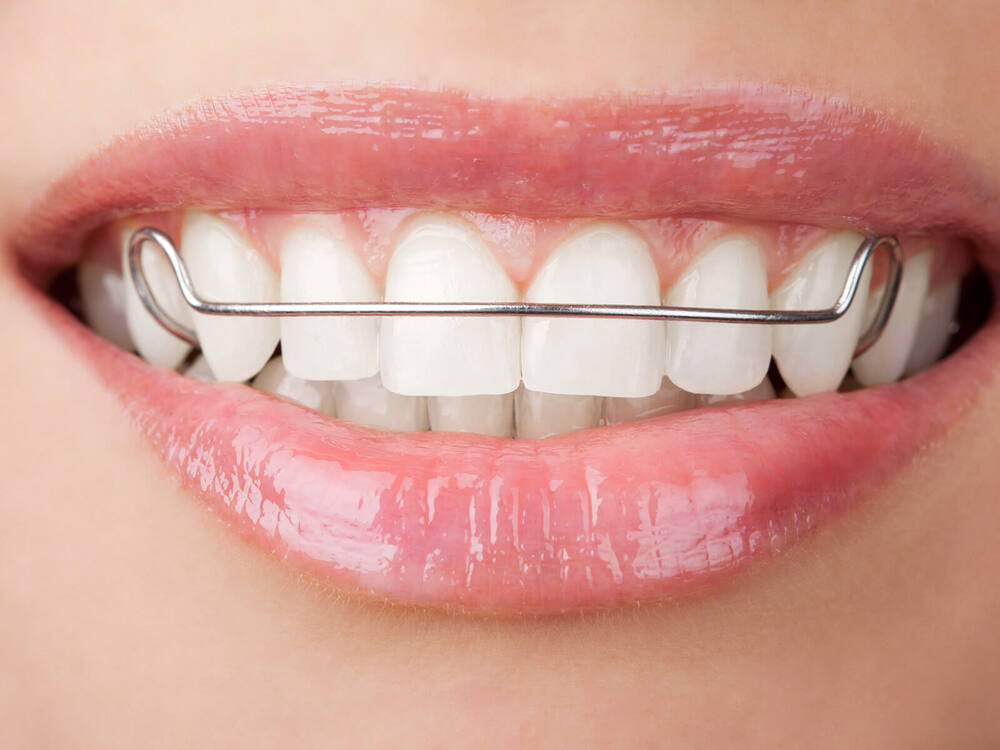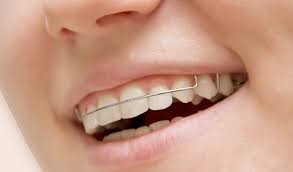
Why Retainers Are Essential After Orthodontic Treatment
What’s the secret to keeping your new, straight smile in place? Many people think that once the braces come off, their work is done. But here’s the truth: retainers are essential to make sure your teeth stay aligned for the long haul. Orthodontic treatment is a big commitment—months, sometimes years, spent adjusting your teeth to reach that healthy, balanced look. Yet, without a retainer, teeth naturally tend to shift back over time.
Think of a retainer as the final step in securing those results. It provides your teeth with the stability they need while the tissues around them settle into place. This simple but critical step makes all the time and effort spent on braces or aligners truly worthwhile, keeping your smile straight, strong, and healthy. That’s why retainers are essential for a beautiful, lasting smile.
What is a Retainer and Its Role?
A retainer is a small but crucial device that holds your teeth in their new, straight positions after braces or aligners come off. After months of careful adjustments, your teeth need time to “settle” and stay in place, and a retainer helps keep them steady, preventing any unwanted shifting.
There are two main types of retainers:
- Removable Retainers: These can be worn part-time, typically at night, giving you flexibility. They’re easy to take out when eating or brushing, making them convenient for daily use.
- Fixed Retainers: These are bonded behind your teeth and stay in place full-time, working around the clock to keep your teeth from moving back. They’re ideal for those who need constant support.
This stage is known as the retention phase, where the goal shifts from moving your teeth to maintaining their new positions. It’s a vital step in solidifying all the progress made with orthodontic treatment. So, when considering why retainers are essential, remember that they’re the key to holding onto your new smile for years to come.
Why Do Teeth Tend to Shift After Orthodontic Treatment?
Once braces come off, it might seem like your teeth are set in place, but there’s more to keeping them straight. Teeth have a natural tendency to shift, partly because of the everyday pressures of chewing, biting, and even talking. These forces can cause small movements over time.
Beyond this, the tissues around your teeth—like the gums, ligaments, and bone—also play a role. When teeth are moved, these tissues need time to adjust to their new positions. They’re still “remembering” the old spots, so they need a bit of time and support to settle in and hold firm.
Without a retainer, there’s a real risk that teeth will gradually drift back to where they started, undoing the results of all those months or years of orthodontic work. That’s why retainers are essential: they help your teeth hold their new positions and protect your investment in a straighter, healthier smile.
Types of Retainers and Their Benefits
There are a few different types of retainers, each with its own benefits, depending on what fits your needs and lifestyle best. Understanding these options can help explain why retainers are essential for keeping your smile in place.
Removable Retainers
Removable retainers are popular for their flexibility. They’re typically made of plastic and wire and are easy to pop in and out, which makes them convenient for cleaning and eating. You usually wear them at night, which is ideal for people who don’t want something on their teeth during the day. Removable retainers are best for those who need part-time wear and want the freedom to remove them when necessary.
Clear Retainers
Clear retainers are a specific type of removable retainer. Made from thin, clear plastic, they’re nearly invisible and offer a low-profile way to hold teeth in place. They’re especially popular among adults who want a subtle option. However, they do need gentle handling since the plastic can be more prone to cracking. Clear retainers work well for people who value aesthetics and are diligent about keeping them safe.
Fixed Retainers
Fixed retainers, also known as bonded retainers, are attached to the back of your teeth and stay there full-time. Because they’re always in place, they provide continuous support without any effort on your part. They’re ideal for people who don’t want to remember to put a retainer in daily or those who need long-term stability for their teeth. Fixed retainers are great for anyone who wants a “set-it-and-forget-it” solution.
Each type of retainer plays an important role in keeping your teeth aligned and preserving your orthodontic results.
How Long Should You Wear a Retainer?
Right after your braces come off, most orthodontists recommend wearing your retainer full-time for a few months. This initial period is essential because it helps your teeth “settle” into their new positions and keeps them from shifting back. During this time, wearing the retainer all day and night (except when eating or brushing) gives your smile the stability it needs.
After those first months, most people can switch to wearing their retainer only at night. Nighttime wear is often enough to maintain your smile and prevent any unwanted movement. However, everyone’s timeline is different—how long you’ll need to wear it each night depends on your specific needs and treatment.
Ultimately, following your orthodontist’s instructions is key. They’ll provide a schedule that works best for you. This gradual transition is why retainers are essential for keeping your teeth aligned and protecting all the hard work of your orthodontic treatment.
Key Benefits of Wearing a Retainer
Wearing a retainer may seem like a small step, but it provides lasting benefits that help you maintain a straight, healthy smile. Here are the key ways a retainer works to protect the results of your orthodontic treatment:
Prevents Shifting of Teeth
The primary reason for wearing a retainer is to keep your teeth from gradually moving back to their original positions. After months or even years of braces or aligners, your teeth may want to shift back due to natural pressures from chewing, talking, and everyday habits. A retainer acts as a steady support, holding your teeth in their new, aligned positions and resisting any movement. Without it, all the time and effort spent achieving that straight smile could go to waste.
Maintains Your New Smile
A straight smile isn’t just about aesthetics—it also makes taking care of your teeth easier. When teeth are aligned properly, it’s simpler to brush and floss thoroughly, reaching all areas and reducing the risk of plaque buildup. Crooked or crowded teeth can create hard-to-clean spots where plaque accumulates, increasing the risk of cavities or gum disease. By wearing your retainer, you keep your smile aligned and make everyday cleaning more effective, supporting better dental health in the long run.
Supports Bite and Jaw Alignment
Orthodontic treatment not only straightens teeth but also adjusts your bite and jaw alignment. Wearing a retainer after treatment helps stabilize these improvements, preventing issues like jaw pain, uneven wear on teeth, and discomfort while chewing. A stable bite means your teeth and jaw work together as they should, reducing the risk of complications and enhancing your overall comfort. The retainer, in this sense, helps maintain a well-functioning, comfortable bite.
Protects Your Orthodontic Investment
Orthodontic treatment is a major investment in time, money, and patience. Wearing your retainer protects this investment by preserving the progress made. Think of it as a safeguard for all the effort you’ve put into achieving your smile. With consistent use, your retainer ensures that you’ll enjoy the benefits of a well-aligned, healthy smile for many years.
In short, a retainer does more than just “hold” teeth—it keeps your smile, bite, and dental health in peak shape, making it an essential part of life after braces.
How to Care for Your Retainer
Taking care of your retainer is simple but important. A daily cleaning routine keeps it fresh and free from bacteria. Use a mild soap or a special retainer cleaner, gently scrubbing with a soft toothbrush. Avoid toothpaste, as it can be too abrasive and scratch the surface.
When you’re not wearing your retainer, always store it in a protective case to prevent it from getting lost or damaged. Also, keep it away from hot environments—heat can warp the material, so avoid leaving it in direct sunlight or a hot car.
Regular checkups with your orthodontist are also part of retainer care. These appointments allow your orthodontist to check for any signs of wear or damage and make sure your retainer still fits well. Taking these simple steps will keep your retainer in good shape, helping it last and continue protecting your smile.
Common Mistakes to Avoid
Avoiding these common mistakes will help keep your retainer in great shape:
- Skipping Retainer Wear: Not wearing your retainer as instructed can cause your teeth to shift back. Stick to the schedule your orthodontist recommends.
- Improper Cleaning Methods: Using harsh cleaners or hot water can damage your retainer. Stick to mild soap or a designated retainer cleaner.
- Neglecting Retainer Maintenance: Check your retainer regularly for any cracks or signs of wear. If it’s showing damage or doesn’t fit properly, reach out to your orthodontist for a replacement. Taking care helps ensure your retainer can do its job.
Final Thoughts: Ensuring the Long-Term Success of Your Orthodontic Treatment
Retainers aren’t optional—they’re essential. They protect your new smile, support your bite, and preserve your dental health long after treatment ends. Following your retainer plan helps ensure your results last a lifetime.
At Elite Orthodontics, we believe that every patient deserves a smile that stays as stunning and healthy as the day their braces come off. That’s why we provide custom retainer solutions tailored to your lifestyle and needs—because your smile deserves lasting care.
Trust Elite Orthodontics to guide you every step of the way—before, during, and after treatment. Let’s keep your smile shining for years to come. Contact us today!

